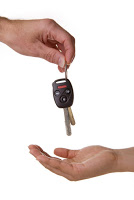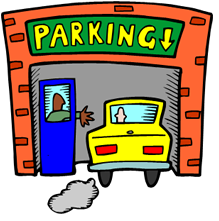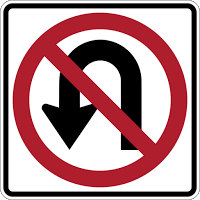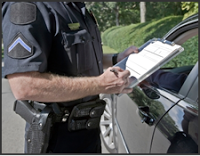
Study Shows Teens with Their Own Car Have More Crashes
February 16, 2012
Two studies published in 2009 showed that teens who had to share a car and whose parents who were involved in their driving in a supportive way were far less likely to be involved in a crash or to engage in risky driving behaviors.
The studies, conducted by Children’s Hospital of Philadelphia (CHOP) and State Farm Insurance, were published in the October 2009 issue of Pediatrics. According to a news release by State Farm Insurance, the studies were based on a National Young Driver Survey of more than 5,500 teenagers in grades 9 through 11.
The first study showed that “teens who said their parents set clear rules, paid attention to where they were going and whom they were with, and did so in a supportive way were:
- half as likely to crash
- twice as likely to wear seat belts
- 71 percent less likely to drive while intoxicated
- 30 percent less likely to use a cell phone while driving
These findings are compared to teens who said their parents were less involved.”
The second study looked at teens who either owned their own car or had easy, unrestricted access to a car were twice as likely to be involved in a crash. The study showed that almost 75% of teen drivers owned or had unrestricted access to a car. 25% of teens who were the main driver of a car reported having been involved in a collision compared to just 10% of those who had to borrow a car.
On a basic level it makes sense; a teen that has to borrow a car faces the wrath of the owner if that car is damaged or destroyed. Teens who own their own car don’t feel that sense of responsibility to protect someone else’s property from harm.
These studies show the critical importance of parental involvement in a teen’s driving environment and add to data that shows Graduated Drivers Licenses for teens work to create a safer driving environment for teens.
Car crashes are the main cause of death for teenagers in the United States. According to the National Highway Traffic Safety Administration (NHTSA), teens are involved in three times as many fatal traffic crashes as all other drivers.
NHTSA figures for 2009 show:
- Traffic crashes are the leading cause of death for 15 to 20 year olds.
- 5,148 15- to 20-year-old drivers were involved in fatal crashes.
- 2,336 15- to 20-year-old drivers were killed.
- 196,000 15- to 20-year-olds were injured in motor vehicle crashes.
- 15 to 20 year old drivers make up 6.4% of the licensed drivers in the US but they account for 11% of the fatal crashes.
Many parents, especially in those households where both parents work, look forward to the day when they no longer have to transport their teen to various activities. However parents should strongly resist the urge to buy a car for the sole use of the teen; at least for the first year. According to data from the Insurance Institute for Highway Safety (IIHS) the most dangerous time for teens is the first year after receiving their driver’s license. The IIHS states that “the crash rate per mile driven is twice as high for 16 year-olds as it is for 18-19 year-olds.”
“Our data show that one of the safest decisions families can make is for parents to control access to the keys for at least the first 6 to 12 months after a teen gets his license,” says Flaura Koplin Winston, MD, PhD, study co-author and scientific director of the Center for Injury Research and Prevention at CHOP. “Our data show an alarming trend – almost three-quarters of teens have easy access to a car. Compared to teens that have to share a car, these teens are twice as likely to crash and more likely to speed and to use a cell phone while driving. When teens have to ask for the keys before taking the car, it naturally creates the opportunity for parents to have conversations with their teens about where they are going, who they will be with, and to review the house rules about driving with passengers, wearing seat belts, using cell phones, and which routes are safe.”
A dialogue should be started with the teen before they receive their learner’s license and an effective tool for setting up those rules and boundaries is the Parent-Teen Driving Contract. When parents and teens both agree on what the rules should be, the teen is more likely to take ownership of that decision.

Parking Lot Safety
February 7, 2012
Finding a convenient and safe parking spot is as much a part of operating a vehicle as driving itself. Depending on the kind of parking situation, it can be as safe as being the only vehicle in that spot, or it might even prove to be more dangerous than the road itself.
Not all parking lots are created equal, even the parking spots don’t come in one flavor, hence the need for some parking lot safety tips.
Some parking spots may be a spot on the side of the road, or somewhere above a multi-tiered structure. Some spots may be straight-in, diagonal and some may not even have guiding arrows to help you. Paying attention plays a huge part in making sure you pick a perfect place to park.
Here are some of the necessary precautions when finding the perfect parking spot:
- Are the doors locked? Are the windows rolled up? Even if you’re leaving for a couple of minutes, you should always do this.
- As much as possible, don’t leave valuables in the car. Make it a habit: if you have the detachable type of GPS or radio, always bring it with you. GPS devices may make life easier, but if stolen, it gives thieves a treasure map to your house.
- Check your phone/plug in your earphones/do errands when you’re inside where you need to be. Your full attention is required in getting out of your car to getting to the destination.
- Is there parking security? If there’s an available spot within the view of security, park there. Not all parking lots are secure.
- Be wary of strangers loitering about the parking lot. The car may be parked, but they may be after you. Notify security if there’s anything out of the ordinary.
When your errands are complete, there are other precautions to be taken:
- Have your keys ready. Fumbling about and digging inside your purse or pocket for the keys in front of your car leaves you vulnerable.
- Always remember where you parked your vehicle.
- Scan the area around your vehicle. Be aware if someone may be following you.
- Check in and around your vehicle. Someone may be hiding behind your car, in front or in the back seat.
- Once safely in your vehicle, lock up and leave.
When backing out of a space, be aware of people or vehicles moving in front or behind your vehicle. Be aware that visibility may be limited when there are bigger vehicles parked next to you. Never put yourself at risk. A parking lot is just a place where you park, not to hang out in.
Additional Tips for Vehicle Theft Prevention from Department of Transportation’s (DOT) National Highway Traffic Safety Administration (NHTSA).

Making a Safe U-Turn
January 30, 2012
Intersection crashes cause the most number of fatalities more than any other crash location. Not only are they spots where red light runners might cause dangers, but also consider the fact that drivers making an innocent U-turn usually become involved if there ever was a crash.
What is truly important is: before making a U-Turn, make sure that you are aware of your state’s laws. Some states allow U-Turns at any intersection, unless there is a traffic sign that states: “No U-Turn Allowed”. There are other states that only allow for U-Turns when there is a “U-Turn Permitted” traffic sign. Almost all states do not allow U-Turns over double yellow lines painted on the road.
You may only make a U-Turn when the traffic light facing you is either a green arrow permitting a U-Turn, or a solid green light. Many people incorrectly assume that they can make a U-Turn while the light is red, even if their vehicle was a considerable distance from the center of the intersection. This is a violation, because doing so is still running a red light.
Here are some rules to making a safe U-Turn:
- Plan your U-Turn by looking for pedestrians or individuals riding bicycles. This means checking if you might hit someone or something when turning into the opposite direction.
- Always look in both directions before beginning your turn. If the light facing you has turned green, wait a second or two for possible red light runners coming from the opposite direction. This is the one tip that might save you the hassle of a crash.
- It’s a good idea to take your foot off the accelerator and moving it closer to the brake, should you need to stop, or when an emergency situation arises.
- If you have started your turn and the light changes, complete your turn as soon as traffic clears. Never try to back up in an effort to avoid blocking the intersection.
- It is important to note that you should always be making your U-Turn while you are at the left portion of the lane closest to the center line of the road. You are not allowed to make a U-Turn near the crest of a hill, a curve, or any other place where other drivers cannot see you from at least 500 feet away from the same direction.
U-Turns are the best way to get back to a location you missed, and making sure you know the right safety precautions while taking them assures you that you get there faster, and safer.

Texting and Driving: What happens when a vehicle comes in your lane.
January 20, 2012
You can read about it several times a week; a driver who is either texting, using a cell phone, or engaged in some other form of distracted driving, drifts over into the oncoming lane causing a crash. This type of crash is becoming all too common and unfortunately, death is often the result. Head-on crashes are the worst type of crash with the greatest potential for serious injuries and death. However, a driver in your lane doesn’t automatically have to result in a head-on crash if you are prepared.
To be prepared for the unexpected drivers should always use the S.I.P.D.E method of defensive driving. That is:
- Search the driving scene – Always be aware of what is happening in front of you, to the sides, and behind.
- Identify hazards – Be on the lookout for anything that could be a potential hazard whether that be a driver about to pull out of a parking lot or a driver ahead who is obviously distracted and isn’t looking at the roadway.
- Predict what may happen – When trying to predict what the other driver might do, in order to best prepare yourself, always predict the worst thing that could possibly happen.
- Decide what you will do – Having a decision already in mind if that other driver should do the worst will allow you additional precious time to escape a collision situation.
- Execute your decision – If the worst thing happens, you will have to put your plan into action in order to escape a collision.
Note: Sometimes you may not be able to completely escape a collision, when planning and executing your decision, you may have to choose to lessen the crash forces rather than escape a crash altogether.
If a driver ahead should suddenly swerve into your lane, you may have very few choices but, to avoid or reduce the severity of the crash, follow these tips:
- Honk your horn to alert the other driver.
- Don’t try to swerve to the left into his lane to avoid a crash, he may realize what he is doing and try to swerve back into his lane at the same time.
- Rather than face a head-on crash, it is better to go off the road to the right. There may be hazards there too so steer to avoid them and try to quickly slow to a stop. It is better to go into some bushes than to crash into something hard.
- Sometimes you may face the very tough choice of hitting a car on the right to avoid a head-on crash. Hitting a vehicle that is going in the same direction as you, while still very serious, is often safer than facing a head-on crash.

Mandatory Traffic School
January 11, 2012
Is mandatory traffic school truly mandatory? In most states, drivers who have been ticketed have the option of attending traffic school if they want the points for their driving infraction removed from their driving record. However, some states make attendance at traffic school mandatory for certain serious infractions. In Florida, a driver will be ordered to attend mandatory traffic school if he or she is guilty of infractions such as: running a red light, failing to stop for a school bus while its stop lights are flashing, racing on the highways, reckless driving, or simply if the driver is a repeat offender of a minor traffic violation.
If a driver is given a traffic ticket and found guilty of one of the listed violations, they will receive notice from the Florida Department of Highway Safety and Motor Vehicles of the requirement to attend a mandatory traffic school.
Here’s how one could satisfy the court’s requirements:
Find out what the court is exactly requiring you to do – Find out the deadline period of completion, find out where you could take your mandatory traffic school.
Look for a good traffic school – One that is court-approved. The student has an option of an online traffic school, or attending online traffic school, or the classroom traffic school.
Learn – Put in the effort to learn how to change your driving behavior. Thing is, driving school is a great way to refresh a driver’s knowledge on driving. It’s also a great way to learn new ways to change their driving behavior and prevent getting another ticket or worse, being involved in a serious collision.
Upon completion, submit your requirements to the court – The state allows 90 days for a driver to complete mandatory traffic school. Find the time to complete it, get the certificate of completion, and submit it to the court immediately.
Points are only removed if a student “elects” to go to traffic school.
